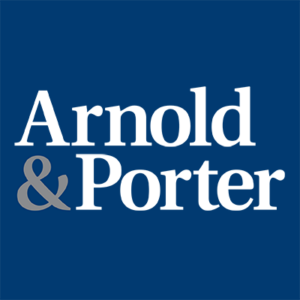AI Innovators Rejoice: English High Court Rules AI Invention Is Patentable | Dechert LLP
Key Takeaways
- An English court has, for the first time, considered whether trained Artificial Neural Networks (“ANNs”) – a component of AI – could qualify for patent protection, or if they would fall under the computer program exclusion, which would exclude ANNs from patentability. This decision could potentially broaden the scope of patentability for AI-related inventions in the UK.
- Significantly, following this judgment, the UK Intellectual Property Office (the “UKIPO”) announced an immediate change in its practice for examining patent applications related to ANNs. Patent Examiners will no longer object to AI inventions involving an ANN under the “program for a computer” exclusion, providing further reassurance for companies investing in AI patenting in the UK.
- The High Court also made a non-binding observation, stating that even if the judgment was incorrect and the ANN was a computer program, the invention had sufficient technical effect and could evade the exclusion. Moreover, the trained ANN could itself be considered a technical effect.
- However, companies should remain alert to the possibility of a further appeal and potential changes to UKIPO practices regarding patent application examinations involving ANNs.
Overview
Emotional Perception AI Ltd (“EPAL”), a company focused on business and domestic software development, successfully challenged an earlier UKIPO decision that deemed its invention involving trained ANNs – which could identify, categorise and recommend media files to users – was not patentable, as it fell within the computer program exclusion1.
The Invention
While the invention could be applied to various forms of media, including music, images, and text, it was specifically explained in the context of music in the court’s decision (as both parties agreed that the invention would most likely be used in the context of music).
The AI system used two ANNs which processed music files based on semantic and physical properties as follows:
- Semantic: The first ANN received a pair of music files, each accompanied by a natural language description reflecting a human’s perception of the music, such as “happy”, “sad”, or “relaxing”. It would then analyse the descriptions of the tracks and, based on human instructions, determine the degree of similarity between the tracks. It would then generate coordinates in a “semantic space” based on the type of music for each track. The distance between the coordinates indicated the degree of similarity or dissimilarity, with closer coordinates suggesting greater semantic similarity.
- Physical: The second ANN analysed the same pair of music files based on physical characteristics such as “tone”, “timbre”, “speed”, “loudness”, and others as determined by humans, producing coordinates in a “property space”. Similar to the process in the semantic space, the proximity between these coordinates in the “property space” would signify their level of similarity or dissimilarity. The second ANN was also trained to adjust the distance between coordinates in the property space according to their distance in the semantic space. Through a repetitive correction process, the ANN was trained to learn to identify other tracks based on a user’s preferences. It would then make a recommendation for a similar track and send a message to the user.
The Decisions
Initially, the UKIPO Hearing Officer denied EPAL’s patent application2. This led EPAL to challenge the UKIPO’s decision on two main points:
- The exclusion for computer programs was not relevant in this instance and did not apply, as the hardware ANN was not a computer and the emulated ANN did not constitute a computer program, as it was separated from the software platform that supported it; and
- Even if the invention was deemed a computer program and initially fell under the exclusion, it should not be applicable in this instance. This is because the invention provided a technical contribution and therefore could not be considered a computer program ‘as such’. Further detail on this point is provided below.
The High Court categorised ANN inventions into two kinds: a hardware ANN, such as a physical device that can be purchased off the shelf and which contains electrical components, and an emulated ANN, where a conventional computer running specific software would mimic the hardware ANN as if it were a hardware ANN.
Ultimately, the High Court found that while a computer program was used during the training phase of the ANN, where it learned to identify semantic similarities or dissimilarities in music, once trained, the ANN operated on a different level from the underlying software that supported it. It was not a computer program itself because it was no longer implementing human written code. Instead, it had self-trained and was applying its own weights and biases to produce relevant coordinates. Therefore, the computer programming used in the training phase was considered secondary to the overall invention. The High Court concluded that it would be inaccurate to view EPAL’s entire system as a computer program.
Additionally, the High Court in a non-binding remark, stated that the invention provided a technical contribution beyond what might be considered a computer program. This was achieved by delivering media files with recommendation messages to end users, thereby placing the ANN outside the computer program exclusion. The court also suggested that the trained ANN itself could constitute an external technical effect, which could also prevent the exclusion from being applied.
UKIPO Response
Following the High Court’s decision, the UKIPO issued statutory guidance on the examination of patent applications involving ANNs3 where it recommended that “patent examiners should not object to inventions involving ANNs under the “program for a computer” exclusion”. The UKIPO further stated that it would update the Manual of Patent Practice and its guidelines for examining patent applications relating to AI inventions to reflect the decision in due course.
It is unclear whether the UKIPO will stop raising objections under the computer program exclusion for ANNs and start invoking a different exclusion, such as the “mathematical method” exclusion. This exclusion is frequently applied to computer-related inventions like mathematical algorithms, but it was not considered further in the appeal for procedural reasons. Despite these uncertainties, this decision is likely to enhance the UK’s attractiveness as a jurisdiction for patentable AI inventions.
What’s Next?
This ruling and the subsequent announcement from the UKIPO present a new and potentially significant opportunity for AI investors and inventors to secure patent protection for ANN-related technology. This outcome is in line with the UK Government’s pro-innovation stance on AI regulation4 and its wider aims to position the UK as an attractive hub for AI development. The UKIPO’s prompt issuance of statutory guidance further signals the UK’s commitment to the AI sector and suggests an anticipated change in patent examination practice. While a further appeal may be on the horizon, companies should, for now, watch for the publication of the updated Manual of Patent Practice and the UKIPO’s guidance for Patent Examiners to better understand how this decision will influence patent examination in practice.
Footnotes
[1] See, Emotional Perception AI Ltd v Comptroller-General of Patents, Designs and Trade Marks [2023] EWHC 2948 (Ch) available at the following link:
[2] See the UKIPO’s decision (BL/O/542/22), dated 22 June 2022, available at the following link:
[3] See the UKIPO’s Statutory Guidance, dated 29 November 2023, ‘Examination of patent applications involving artificial neural entworks (ANN)’, available at the following link:
[4] See the Department for Science, Innovation and Technology and Office for Artificial Intelligence Policy Paper ‘AI regulation: a pro-innovation approach’, published on 29 March 2023, available at the following link:






